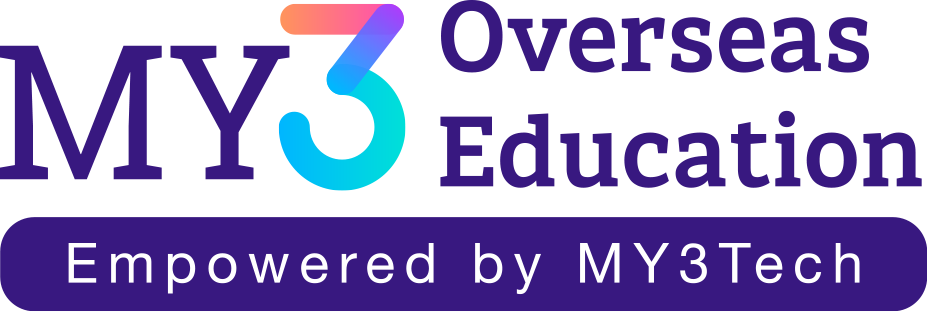IELTS comprehensive guide
IELTS is considered as the International English Language Testing System. It is the most believed and approved English proficiency test by more than 10000 education institutions along with many professional alliances, immigration authorities, and many employers across the world. The test is organized by IDP education system, and it evaluates the applicant’s accuracy in four different modules of English language that is Listening, Reading, Writing, and Speaking from across the planet. People who aspire to immigrate or study in English speaking countries should take this test. Each year over 3 million applicants take the IELTS test from over 150 countries to seek higher education, professional registration, and permanent residency.
IELTS test has two test types- IELTS Academic and IELTS general test. The applicants should start their IELTS journey by choosing the type of IELTS they should enroll in.
Academic Test: This test is applicable for students’ seeking education in international institutions.
General Training Test: This test is chosen by people seeking employment or work in international institutions
Mode of the test
The modes of the IELTS test encompass the different formats available for test-takers. There are two primary modes:
Paper-Based IELTS (PBT):
- In this conventional format, examinees receive a physical test booklet and answer sheet.
- Test components (Listening, Reading, Writing, and Speaking) are administered using paper materials.
- The Speaking test involves face-to-face interaction with an examiner.
- PBT sessions are held on specific predetermined dates at authorized test centers.
- Examinees must bring their own pens or pencils to complete the written sections.
Computer-Based IELTS (CBT):
- CBT allows individuals to undertake the test electronically at designated test centers.
- Listening, Reading, and Writing sections are completed using a computer interface.
- The Speaking test remains conducted in person with an examiner.
- Results are typically delivered quicker (within 3-5 days) compared to PBT.
- CBT offers greater flexibility in scheduling, with availability extending up to 7 days per week.
Ensure to select the mode aligning with your preferences and schedule. Both formats effectively evaluate English language proficiency. Should you require further assistance, feel free to reach out!

IELTS Test Format
- The Listening, Reading and Writing sections of all IELTS tests are completed on the same day, with no breaks in between them.
- The Speaking section, however, can be completed up to a week before or after the other tests. The total test time is 2 hours and 45 minutes.
Listening
- Duration:30 minutes
- You will listen to four recordings—both monologues and conversations by native speakers—and respond to a series of questions.
- These questions assess your ability to grasp main ideas, detailed information, and the opinions and attitudes of the speakers. They also evaluate your understanding of what is said and your ability to follow ideas.
- A variety of voices and native-speaker accents are used throughout the test, and you will hear each section only once.
- The Listening section is the same for both Academic and General Training versions.
Section 1: A dialogue between two people in an everyday social context, such as in an accommodation agency.
Section 2: A monologue in a social context, like a speech about local facilities.
Section 3: A conversation among up to four people in an educational or training context, such as a discussion between a university tutor and a student about an assignment.
Section 4: A monologue on an academic subject, such as a university lecture.
Reading
- Duration: 60 minutes
- The Reading section comprises 40 questions designed to test a wide range of reading skills. These include reading for gist, main ideas, detail, skimming, understanding logical argument, and recognizing writers’ opinions, attitudes, and purposes.
Academic Reading: Consists of three long texts, ranging from descriptive and factual to discursive and analytical. These texts are taken from books, journals, magazines, and newspapers and are suitable for anyone entering undergraduate or postgraduate courses or seeking professional registration.
General Training Reading: Requires reading extracts from books, magazines, newspapers, notices, advertisements, company handbooks, and guidelines. These materials are commonly encountered in an English-speaking environment.
Writing
- Duration: 60 minutes
Academic Writing: Includes two tasks on topics of general interest, suitable for undergraduate or postgraduate studies or professional registration.
- Task 1: You will describe, summarize, or explain information presented in a graph, table, chart, or diagram. This may involve describing data, explaining the stages of a process, how something works, or describing an object or event.
- Task 2: You will write an essay in response to a point of view, argument, or problem. Both tasks must be written in a formal style.
General Training Writing: Includes two tasks based on topics of general interest.
- Task 1: You will write a letter requesting information or explaining a situation. The letter may be personal, semi-formal, or formal in style.
- Task 2:You will write an essay in response to a point of view, argument, or problem. The essay can be slightly less formal than the Academic Writing Task 2 essay.
Speaking
- Duration: 11 to 14 minutes
- The Speaking section assesses your spoken English proficiency and is the same for both Academic and General Training versions. Each test is recorded.
Part 1: You will answer general questions about yourself and familiar topics such as your home, family, work, studies, and interests. This part lasts between four to five minutes.
Part 2: You will receive a card asking you to speak about a specific topic. You will have one minute to prepare and then speak for up to two minutes. The examiner will then ask one or two questions about the topic.
Part 3: You will answer further questions related to the topic in Part 2, allowing for discussion of more abstract issues and ideas. This part lasts between four to five minutes.
The Speaking section is designed to elicit spontaneous responses.
The following table shows the IELTS exam pattern
|
Module |
Time Duration |
Brief Description |
|
Listening |
30 minutes |
4 sections, 40 questions |
|
Writing |
60 minutes |
2 Writing tasks |
|
Reading |
60 minutes |
3 sections, 40 questions |
|
Speaking |
11-14 minutes |
3 part one-on-one conversation |
IELTS Exam Fee
- IELTS on Computer for UKVI: ₹17,250
- Computer-delivered IELTS: ₹17,000
- IELTS Life Skills (A1 and B1): ₹16,050
- IELTS for UK Visas and Immigration: ₹17,250
- Pen and Paper-based IELTS: ₹17,000
- Retaking One Skill: ₹11,300
In case you need to cancel your IELTS exam, here are the corresponding cancellation fees:
- For Paper-Based IELTS, an administrative charge of ₹4,250 (inclusive of all taxes) is applicable. Upon cancellation 9 days before the test date, the remaining ₹12,750 will be refunded within 10-12 working days.
- For Computer-delivered IELTS, the cancellation fee is ₹4,300, with the balance of ₹12,900 refunded if cancelled 9 days before the test date.
- For IELTS Life Skills, the cancellation fee stands at ₹4,000, with a refund of ₹12,000 for cancellations made 9 days prior to the test date.
- Regarding IELTS UKVI, the cancellation fee is also ₹4,300.
Payment for the IELTS exam can be made through various channels, including:
- Credit/Debit cards (Visa or MasterCard)
- Net banking
- Demand draft
Ensure to adhere to the guidelines provided for each payment method. If you have further inquiries, don’t hesitate to reach out!
IELTS Eligibility Criteria
- The test claimant’s minimum age should be at least 16 years and above with a valid passport.
- IELTS can be taken by applicants irrespective of gender, race, nationality, or religion.
- There is no such eligibility of education while considering IELTS for applicants by the IDP.
- There is no maximum limit set by the IDP for taking the IELTS exam.
- Applicants can take the IELTS test as many times as they want until you achieve your targeted score band.
When is the Exam Conducted?
- The IELTS examinations are conducted year-round, with test dates varying based on the format (paper-based or computer-based) and location. Here’s an overview:Paper-based IELTS:
- Offered on 48 fixed dates
- Available for both IELTS Academic and IELTS General Training
- Typically scheduled on Saturdays.
Computer-delivered IELTS:
- Accessible up to 7 days a week.
- Offered at authorized test centers.
- Availability contingent upon local demand and test center schedules.
Test Centers in India:
- India boasts 50+ test centers where the IELTS exam is administered.
You can register for the IELTS exam up to 3 months before the test date. However, make sure to complete your registration no later than one week before the actual test day. Keep in mind that the availability of seats at your chosen test location plays a role, so it’s advisable to book early to secure your preferred date and time.
Results of IELTS:
- You’ll receive your IELTS result within the following time frames:
- IELTS on Paper (IOP): Results are released after 13 calendar days from the test date.
- IELTS on Computer (IOC): Results are released 2 to 5 calendar days after the test date.
- Checking Your Results Online:
- Once your results are ready, you’ll receive an email notification with a link to view your scores.
- Some test centers also provide an SMS preview alert directly to your phone.
- Remember that we cannot disclose your IELTS results via email or over the phone; you’ll need to use the link to see your scores online.
- Your results will also be available to view online after they are released, but for official confirmation, you’ll need your IELTS Test Report Form (TRF).
- IELTS Test Report Form (TRF):
- The TRF is the official confirmation of your test result.
- It can be a paper copy or an electronic version (eTRF).
- If you’ve taken IELTS on paper, the paper copy of the TRF can be collected in person at the test center or delivered by post.
- If you’ve taken IELTS Online or IELTS on computer, you’ll receive your results electronically only (eTRF).
- You can download the eTRF from the Test Taker portal 3-8 days after your test.
Most institutions require original copies of your TRF, so photocopies won’t be accepted.
Who Can Appear For IELTS?
- Students and applicants who have a valid passport and are looking for higher studies, work or to migrate can appear for IELTS.
- Students who are planning for abroad education with high rated world-class universities to enhance their education carrier or the students who need a scholarship program from the desired university can enroll for Academic IELTS.
- Applicants who want to stay abroad with a PR (Permanent Residency) visa, or applicants who want to migrate from abroad, then IELTS is required.
Duolingo English Test
The Duolingo English Test has gained traction among students aspiring to pursue overseas studies and needing to fulfill English language proficiency requirements. Its format resembles that of other English language proficiency exams.
Duolingo Exam Pattern
The Duolingo exam pattern is straightforward, comprising four sections: listening, reading, writing, and speaking. It consists of two segments, to be finished within a one-hour timeframe. One segment is an adaptive exam lasting 45 minutes, featuring a series of questions designed to assess English proficiency. The other segment is a 10-minute Speaking and Writing exam with open-ended questions, with test results subsequentlyforwarded to the relevant institutions.
In the Duolingo English Test (DET) exam pattern, there are two main components:
- Adaptive Test – Graded Portion: This section comprises speaking, writing, listening, and reading exercises. The questions are adaptive, meaning that the difficulty level adjusts based on the candidate’s responses. Correct answers lead to more challenging questions, while incorrect answers result in easier ones.
- Video Interview – Ungraded Portion: This part involves a written sample and a video interview. Unlike the adaptive test, this segment is ungraded and serves as an opportunity for candidates to showcase their language skills through spoken and written responses.
|
Duolingo exam time duration |
Skills that are tested |
Name of the section |
|
45 minutes |
Reading, writing, speaking and listening |
Adaptive section |
|
10 minutes |
Responses to open-ended questions |
Video interview |
In the Adaptive Test section of the Duolingo English Test, you will encountervarious types of questions designed to assess your language proficiency:
- Select Original Words: Listen to spoken words and choose the original ones from a list.
- Match Written Words: Select the original words from a list based on written prompts.
- Fill in the Blanks: Complete sentences by filling in missing words.
- Visual Representation: Create or interpret visual representations by writing or reading aloud.
- Record Spoken Responses: Speak aloud to respond to questions or prompts.
- Type Responses: Listen to sentences and type them out accurately.
These tasks assess different aspects of your language skills, including listening, reading, writing, and speaking.
Sectional Details of Duolingo Exam Pattern:
- C-test: This section evaluates writing skills by requiring candidates to fill in missing or damaged letters in short passages.
- Yes & No Vocabulary: Candidates select correctly spelled words from a group of options, assessing vocabulary knowledge.
- Dictation: Candidates listen to short passages and transcribe them using the keyboard, testing listening and writing skills.
- Elicited Imitation: This task assesses reading and speaking abilities, requiring candidates to repeat sentences after understanding them.
- Interactive Reading: Tasks in this section include reading for comprehension and reading to learn.
- Interactive Listening: This section measures listening, reading, and writing skills, with a focus on listening processes. Questions involve conversations related to academic settings.
- Extended Writing: Candidates complete three picture description tasks and two independent writing tasks based on prompts.
- Extended Speaking: Tasks require candidates to describe topics or images, provide arguments, and speak for specified durations.
- Video Interview and Writing Test: This section lasts for 10 minutes and includes:
– A three to four-minute video interview where candidates speak on one of two given themes.
– A three to five-minute writing task on one of two subjects provided.
These sections collectively assess various language skills, including writing, vocabulary, listening, speaking, and reading.
Duolingo Exam Fee:
The Duolingo English Test has gained popularity as a convenient option for assessing English proficiency. Here’s the breakdown of the exam fees:
- Individual Test Fee:
– The fee for a single test session is USD 59 or approximately ₹4,899 in Indian rupees.
– This payment allows you to take the test once.
- Test Bundle Fee:
– If you opt for a test bundle, which includes two DET tests, the fee is USD 98.
– Choosing the test bundle gives you the opportunity to attempt the test twice and submit your best scores to different universities.
- Payment Methods:
– Payment of the Duolingo exam fees can be made directly on the official Duolingo website.
– Accepted payment methods typically include credit cards and debit cards.
- Test Duration:
– Upon purchasing the test, you have a 21-day window to schedule and take the exam.
– It’s important to plan and schedule your test within this timeframe to ensure smooth processing.
These details provide clarity on the exam fees and payment methods for the Duolingo English Test. If you have any further questions, feel free to ask!
When is the Exam Conducted?
The Duolingo English Test (DET) offers a flexible and accessible way to evaluate English language proficiency. Here’s what you need to know about Duolingo exam dates:
Flexibility:
– Unlike traditional tests with fixed dates, DET operates without specific exam dates.
– Test-takers are provided with a 90-day window to schedule and complete the exam.
– Within this timeframe, you have the flexibility to select a convenient date and time for your test.
Advantages of DET:
– Convenience: Take the exam from the comfort of your preferred location.
– Affordability: DET is known for its reasonable exam fees, making it accessible to a wide range of candidates.
– Rapid Results: Receive your test scores within 48 hours (about 2 days) of completing the exam.
With its flexible scheduling, comprehensive assessment, and quick results turnaround, the Duolingo English Test offers a convenient and efficient way to demonstrate language proficiency.
Duolingo Score Interpretation:
- Overall Score Range:
- The Duolingo Test Score spans from 10 to 160.
- A score of 10indicates basic language comprehension, suitable for everyday conversations.
- A score of 160 reflects advanced language proficiency, showcasing effective communication across diverse contexts.
- Sub scores Breakdown:
DET assesses four key language components:
- Literacy: Ability in reading and writing.
- Comprehension: Capability in reading and listening.
- Conversation:Proficiency in listening and speaking.
- Production: Competency in writing and speaking.
Eligibility:
- Test takers should be at least 13 years old. Minors might need parental consent depending on their country’s laws.
- There are no academic qualifications or prerequisites required to take the DET. This means you don’t need specific educational achievements to register.
- Verifying the identification of the exam taker requires a valid government-issued photo ID. The name used to register for the test and the name on the ID must match.
- A computer with a camera, microphone, speakers, and a reliable internet connection.

